It’s as Aussie a Dairy Milk bar as you’ll find, made in Hobart from Tassie milk and Queensland sugar. But you’ll struggle to find it any shops.
Just north of Hobart, on an idyllic location overlooking the River Derwent, the Cadbury factory churns out millions of Dairy Milk bars each year.
But despite the bars being all made by Australian workers with Tasmanian milk and Queensland sugar (and a whole lot of Ghanaian cocoa), there are some varieties coming off the conveyor belt that Aussie consumers will likely never see.
Devoured abroad, they’re the Australian Dairy Milk flavours that aren’t for Australians.
It’s one of the many secrets of Cadbury’s Tasmanian chocolate factory which celebrates its 100th year of operation – and Cadbury’s centenary in Australia – this year.
There’s the core ingredient of Cadbury chocolate that’s kept under “lock and key,” as well as the simple but very secret process by which a familiar favourite treat is made.
And while the historic building in the Hobart suburb of Claremont produces runaway bestsellers, there’s been a few duds along the way too – including one recent launch which, as one Cadbury employee put it, “didn’t exactly set the world on fire”.
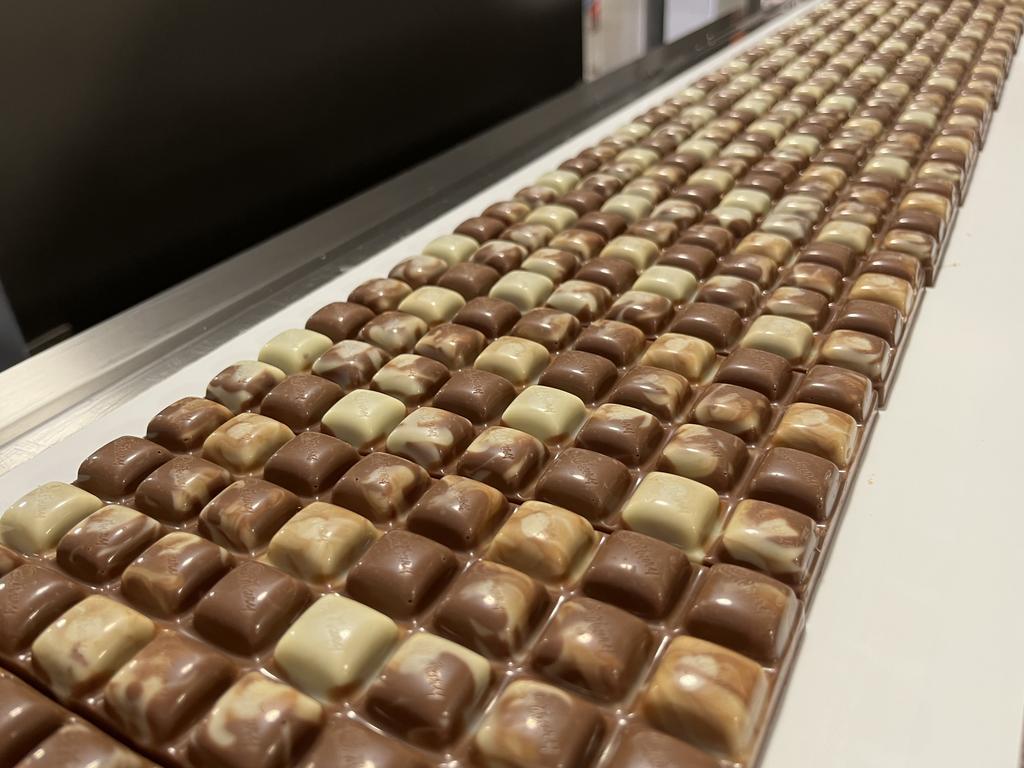
Subtle hints to the heritage of Cadbury – now owned by US firm Mondelez that also makes Oreo biscuits and Toblerone bars – pepper Claremont.
One street is called Bournville Road, named after the Birmingham suburb where Cadbury’s first factory was built, another MacRobertson’s Road, in honour of the Aussie company which created Cherry Ripe, Old Gold and Freddo Frog that Cadbury’s gobbled up in 1967. Even the park benches are painted purple.
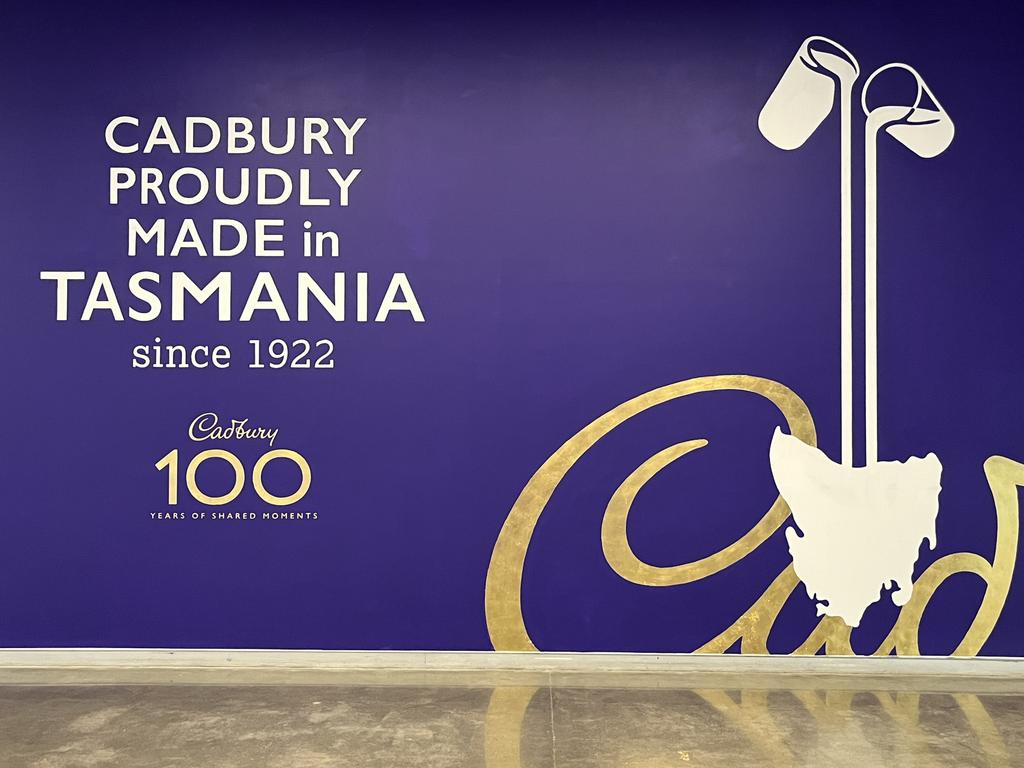
Cadbury ‘foolish’ for picking Hobart
Manufacturing manager Jamie Salter is in charge. His grandmother, father, mother, two brothers, three sisters and an aunt have all worked here too. Together they’ve racked up 170 years of employment. He met his wife in the factory 31 years ago.
“There’s a big family history here. They even say we have purple blood,” Mr Salter told news.com.au.
Cadbury was born in Britain in 1824 when John Cadbury opened a grocery shop in Birmingham, UK. His sideline in drinking chocolate and later blocks became a bestseller. The first overseas order, in 1881, came from Australia.
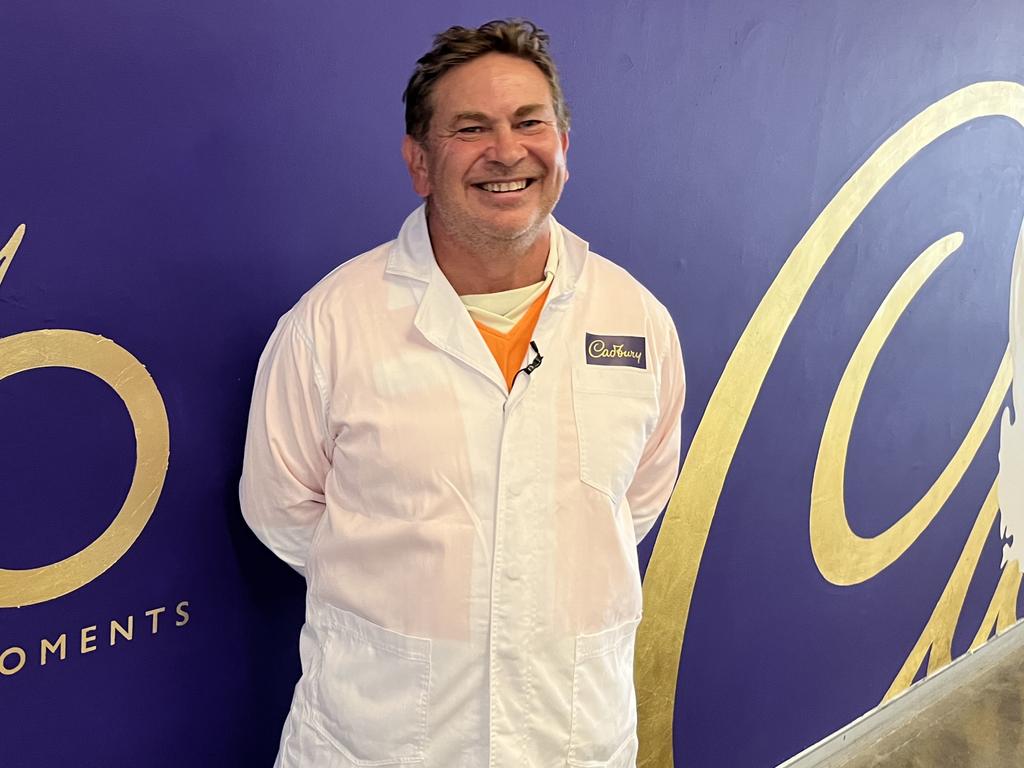
So keen were Aussies on Dairy Milk, it made sense to set up a factory here which occurred in 1922. But there was puzzlement at why Hobart and not, say, Melbourne or Sydney was chosen.
A piece in the Launceston Daily Telegraph in May 1920 said Cadbury directors were in “no doubt they should be told they were foolish for choosing Hobart. As Tasmania has some rather severe handicaps in its isolation from the mainland”.
“The one great factor was the climate which was altogether in favour for the manufacture of (chocolate).”
There were other factors too. Tasmania was blessed with a wealth of hydro-electric power, essential for the large site, and the state government had thrown a few pounds Cadbury’s way too.
Then there were the cows. Tassie is rich diary country and now, just like in the 1920s, the milk in Dairy Milk comes from farms around Burnie in the state’s north. Every day that Tassie milk is trucked down to the Hobart plant.
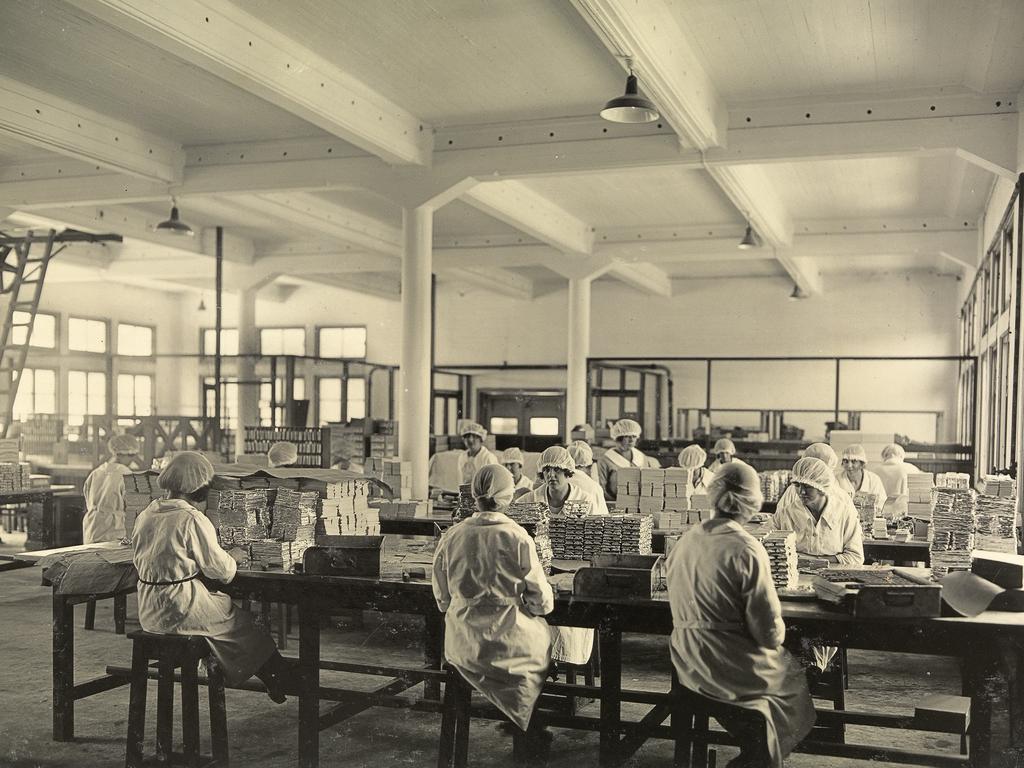
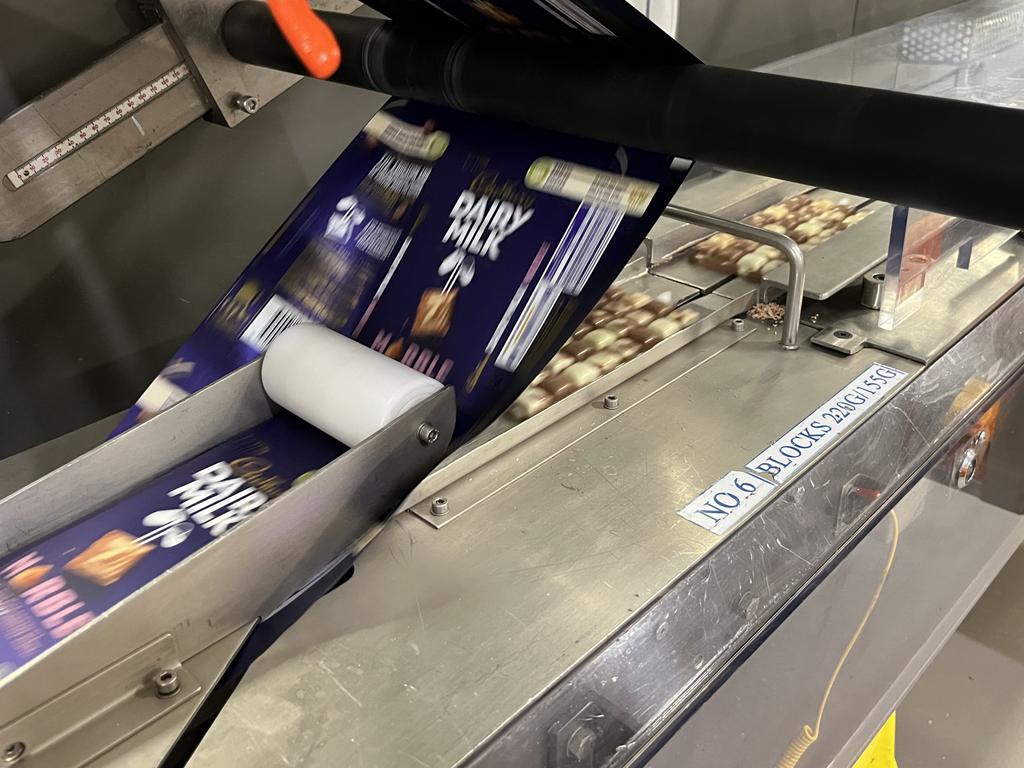
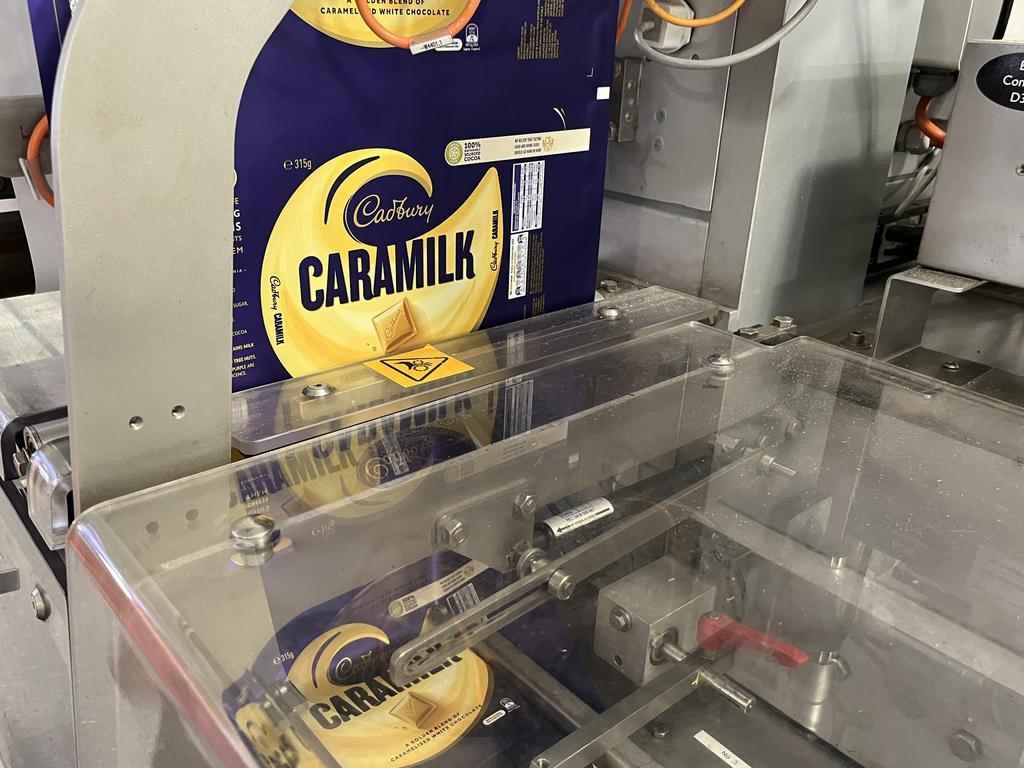
Cadbury products that worked – and some that didn’t
The factory is a cacophony. A quarter of a billion blocks are made each year. All around hot, gooey milk chocolate is being poured into moulds which are rapidly chilled and then sent flying along conveyors to be wrapped.
One room in the Hobart plant is dedicated to Caramilk, the caramelised white chocolate creation which has become one of the company’s biggest hits.
There are now Caramilk Twirls, Caramilk ice creams and even Caramilk hot cross buns at Woolies.
But not all Cadbury products made at Hobart have been as successful. Even the best laid chocolate plans can go awry, revealed Peter Huitema who coordinates new product launches.
In 2017, the firm launched Cadbury Dark Milk in Australia ahead of a global rollout. It was billed as the “perfect blend of rich cocoa notes and the smooth creaminess of milk chocolate”. Posters depicting the product can still be found around the factory. But it’s no more. You won’t see the product on shelves.
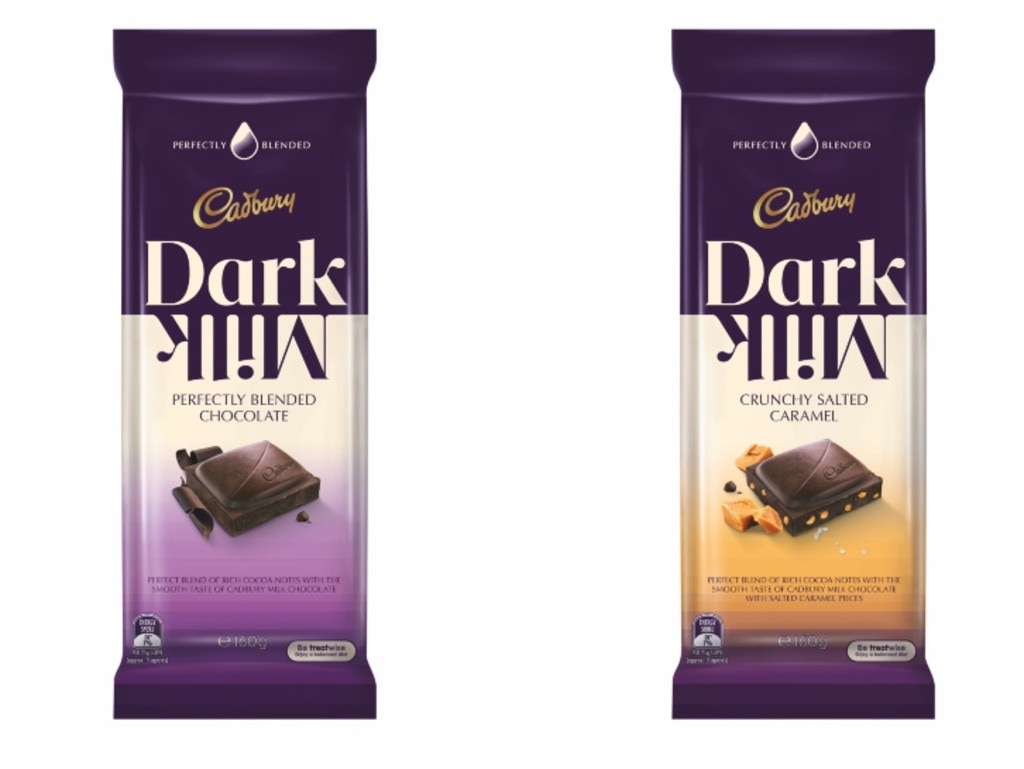
“There was a fairly massive spend on that one and it was completely new chocolate to park something between Old Gold and the sweetness and creaminess of Dairy Milk.
“And it didn’t taste bad, it just didn’t set the world on fire,” Mr Huitema said.
“Volume with very good quality is our main business. So to do a niche market is always a bit of a risk because there’s so many other chocolatiers out there that also doing that niche.”
But the Dark Milk experiment didn’t go to waste. Cadbury is now using the same moulds to make another chocolate block. It’s a new brand called Cadbury Dairy Milk More Cocoa and Milk Less Sugar which the firm hopes will satisfy those who want a less sugar packed diet. If they can remember the tongue twister of a name, that is.
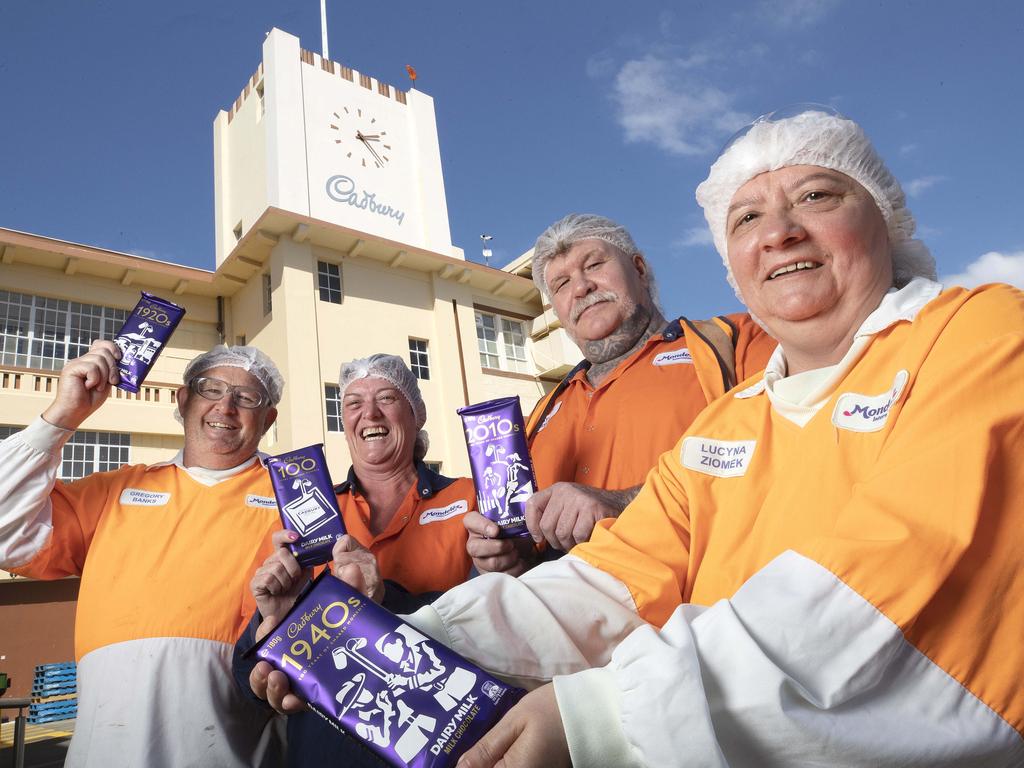
Aussie Cadbury bar Australia has never seen
Getting a new variant of Dairy Milk to market takes a while – up to 18 months, said Mr Huitema.
And while most of those variants made in Hobart end up on Aussie supermarket shelves, some are sent straight offshore. They’re true blue Aussie made but not devoured by Aussies.
One is Cadbury Dairy Milk with Snifters. It’s the same Dairy Milk chocolate but with green marshmallow pieces.
If you’ve never heard of Snifters, you’re not alone. It’s a Kiwi thing based on Pascall Snifters Lumps, a minty version of that other Kiwi classic, Pineapple Lumps.
Since Mondelez controversially closed down the last NZ Cadbury factory in 2019, in Dunedin, all the weird and wonderful New Zealand products – from Chocolate Fish to Perky Nanas and Snifters – are made in Australia.
“Snifters is a very iconic New Zealand product. But unless people bring it back or send it across in suitcases it won’t be in Australia,” said Mr Huitema.
“We do a fair bit for New Zealand. It’s a great way to test things out and if something takes off over there you can bring it over here.”
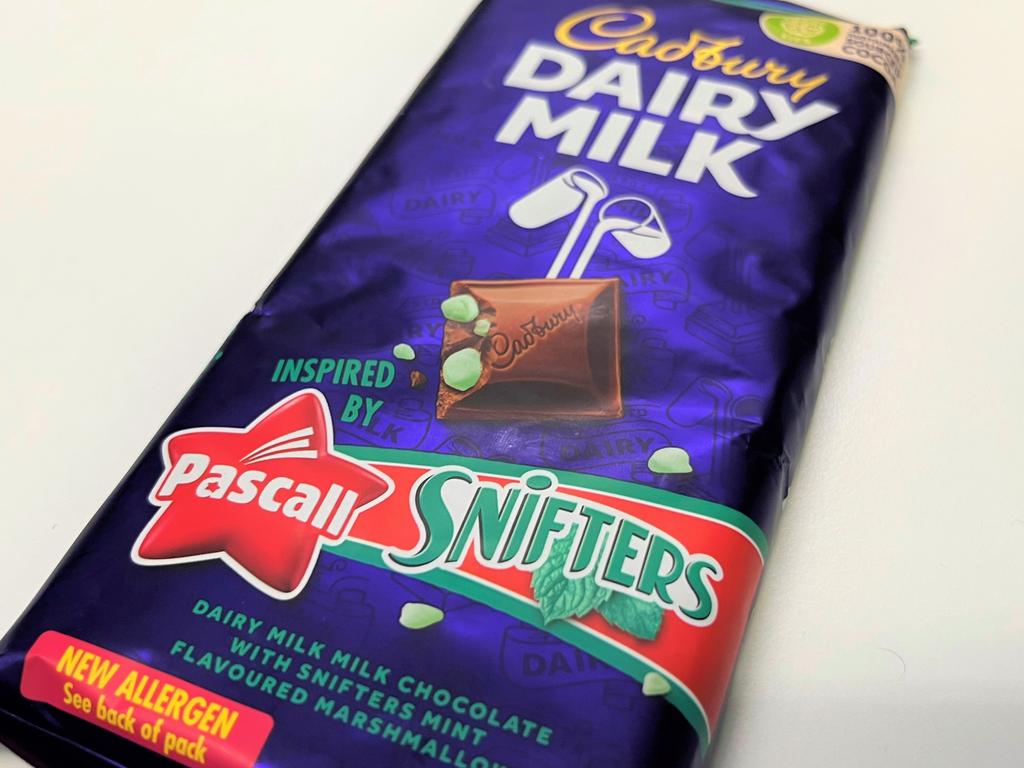

Indeed, there’s no better example of that than Caramilk, whose popularity in New Zealand gave Mondelez the confidence to give it a go in Australia. Now it’s also being made in Cadbury’s home market of Britain.
Cadbury recipes kept under ‘lock and key’
With its masses of steelwork and chimneys it looks like any other factory.
But the smell is unique. Like a warm hot hug of toasted cocoa.
Much of that is down to the core ingredient of every Cadbury bar – what’s known as the “crumb”.
“Crumb is the base of our chocolate that gives it the taste,” said Mr Salter.
It consists of cocoa mass, milk and sugar which is cooked, dried and grinded into a powder and later helps to give Cadbury chocolate its distinctive taste.
Hobart’s crumb is exported to Malaysia and Pakistan to Cadbury factories there.
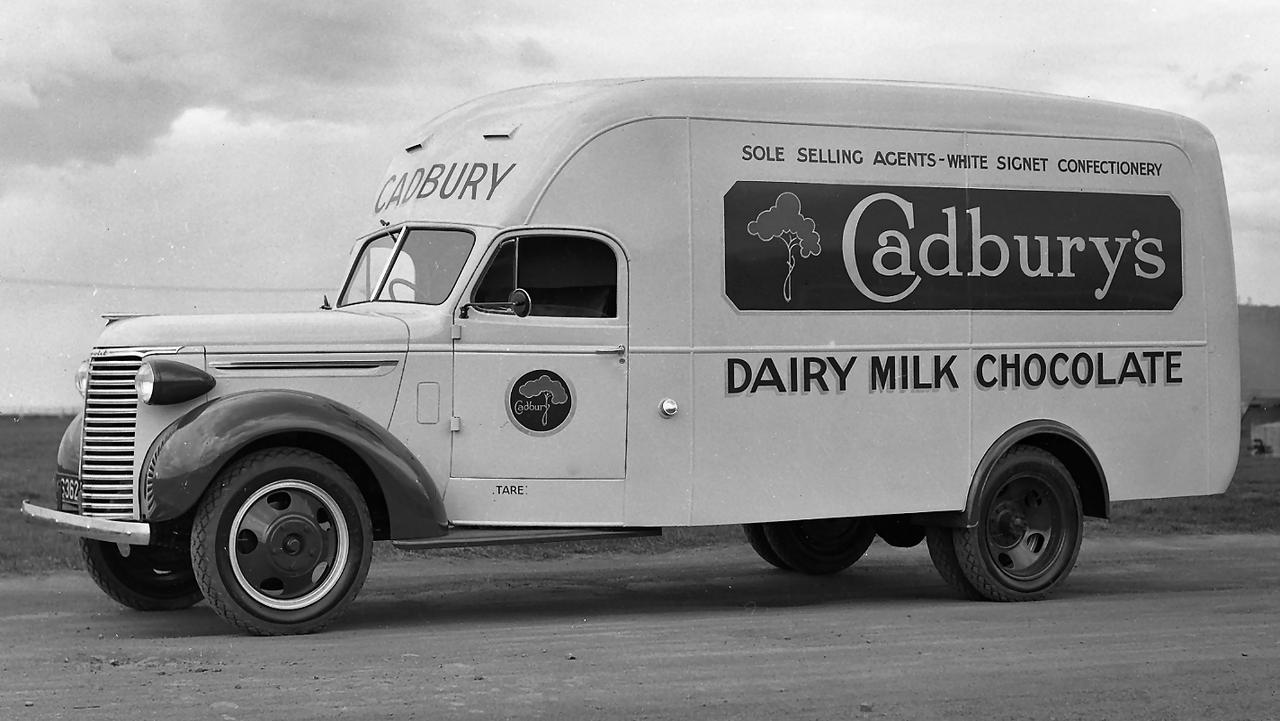
But like the Colonel’s Secret Recipe, the exact details of how it’s made are all very hush-hush.
“It’s under lock and key. I can’t tell you too much or you’ll be able to make it,” said Mr Salter said with a smile.
Another secret recipe is one of the simplest – the Flake. There’s been rumours that people had to sign nondisclosure agreements before they could see how it’s produced.
Mr Salter couldn’t confirm that but he did say the actual process is kept away from prying eyes.
The under wraps method, he said, was one of the reasons that Flake had few competitors.
In his 35 years at the Hobart factory, Mr Salter said he’s seen many changes.
“The biggest has been the automation, upgrading equipment to make us more efficient”. An example of that is machines that now wrap hundreds of bar a minute, a process that used to be done by hand.
Mr Salter said it was “very important for the Tasmanian community” to have a big brand like Cadbury on the ground.
He’s optimistic that in a century’s time the Hobart factory will still be making Dairy Milk bars by their millions.
“And hopefully in 100 years’ time there will be someone here from another family just like mine celebrating 200 years of Cadbury in Tasmania.”
The journalist travelled with the assistance of Mondelez.
Extracted from news.com.au